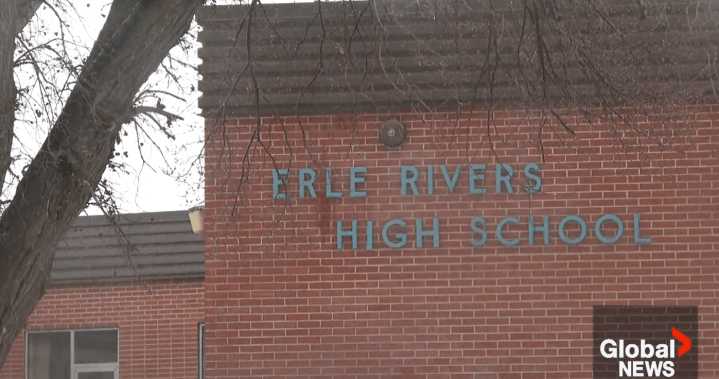Jarrad McCoy, a resident of Milk River, envisions transforming the former Erle Rivers High School into a community asset. The school is slated for demolition to make way for a new K-12 school, but McCoy believes the existing building could be repurposed instead. He sees potential for the building to serve as a church, daycare, library, and housing for the community. McCoy believes that reusing the building aligns with the principles of reduce, reuse, and recycle that he learned as a student in the Horizon School Division.
One of the key issues facing Milk River is a lack of housing units, which is hindering the community’s growth. Retired doctor Liesl Lewke-Bogle highlights the challenges faced by healthcare professionals who have had to commute from neighboring towns due to the housing shortage in Milk River. McCoy’s proposed project aims to address this issue by creating rental properties within the former high school building. The project has garnered support from various community members who see the potential benefits it could bring to Milk River.
Despite McCoy’s efforts to present plans for repurposing the high school building to the Horizon School Board, the board cited the poor condition of the facility as a reason for demolition. Horizon School Division indicated that they had received conditional approval from the Government of Alberta to salvage the building based on a request from the Town of Milk River. However, the town council ultimately supported the decision to demolish the school. The school division also pointed out the significant costs associated with asbestos abatement, which has been estimated at $1.1 million.
Private investors have expressed willingness to cover the costs of asbestos abatement and cancellation of the demolition contract, but communication with the school district has stalled. McCoy highlights the economic advantage of repurposing the existing building, as new construction typically costs much more per square foot. He believes that retrofitting the high school building for housing units would provide a cost-effective solution to the housing shortage in Milk River. However, Horizon has indicated that once the land is cleared, it will be handed over to the Town of Milk River for future development.
The potential repurposing of Erle Rivers High School has ignited a debate within the Milk River community about the best course of action for the building. While McCoy and his supporters see the project as a way to address critical community needs such as housing, childcare, and community spaces, the school division and town council have favored demolition. The differing viewpoints on the future of the building reflect broader discussions about development and growth in Milk River, as residents and stakeholders navigate the challenges of balancing preservation with progress.
As the fate of Erle Rivers High School hangs in the balance, the outcome of the debate will have a significant impact on the future of Milk River. Whether the building is ultimately repurposed or demolished, the decision will shape the town’s landscape and determine how it addresses key issues such as housing and community services. McCoy’s efforts to save the building and repurpose it for the benefit of the community have sparked important conversations about the value of historical buildings and the possibilities for sustainable development in small towns like Milk River.


